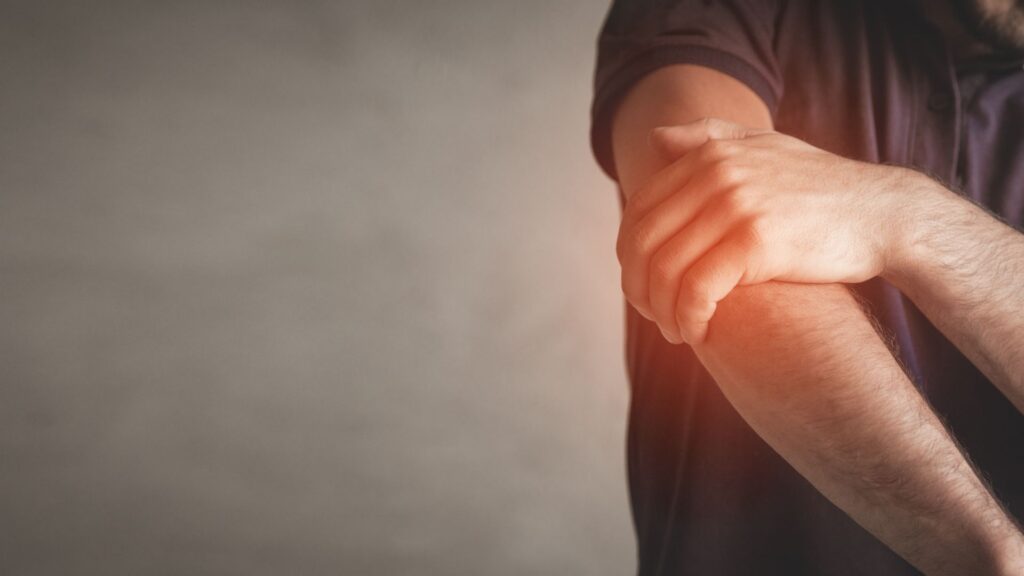About
Anatomy: The Forearm Bones
Our arms comprise two long bones, the radius and the ulna. They run parallel to each other, extending from the elbow at the top down to the wrist. The radius is on the thumb side, while the ulna is on the pinky side. These two bones allow us to rotate our forearm, like when turning a door handle or screwing in a light bulb.
Diagnosis
Mechanism of Injury: How Forearm Fractures Occur
Forearm fractures usually occur due to a direct impact or a fall on an outstretched arm. Jack’s fall on the basketball court caused a forceful impact on his forearm bones, leading to a fracture.
Types of Fractures: Different Ways the Forearm Bones Can Break
There are several types of forearm fractures, including:
- Ulna Fracture: Only the ulna is broken.
- Radius Fracture: Only the radius is broken.
- Both-Bone Forearm Fracture: Both the radius and ulna are broken.
- Monteggia Fracture: A ulna fracture with dislocation of the radial head at the elbow.
- Galeazzi Fracture: A radius fracture with ulna dislocation at the wrist.
Jack had a both-bone forearm fracture, a common type involving both the radius and ulna.
Symptoms and Signs of Fracture: Knowing When Something is Wrong
The symptoms of a forearm fracture can include:
- Pain and swelling in the forearm
- Difficulty moving the wrist or elbow
- A visible deformity or change in the shape of the forearm
- Bruising or discolouration of the skin
Jack experienced all these symptoms, prompting him to seek medical attention
Treatment
Examination and X-Ray: Getting a Closer Look
At Urgent Care Brisbane, the healthcare provider examined Jack’s arm and ordered an X-ray to confirm the diagnosis. The X-ray revealed a both-bone forearm fracture, confirming Jack’s suspicion.
Management: Treating the Fracture
There are various ways to manage forearm fractures, depending on the fracture type and severity. Options include:
- Closed reduction: The healthcare provider manipulates the broken pieces back into alignment without making an incision
- Casting: A synthetic cast is applied to hold the bones in place while they heal.
- Open reduction: A surgical procedure in which an incision is made to access the fracture site, and the broken pieces are realigned.
- Internal fixation: Using plates and screws to hold the bones together, usually combined with open reduction.
Jack’s fracture was managed with a closed reduction and a synthetic cast. His healthcare provider at Urgent Care Brisbane skillfully realigned his bones without surgery and applied a cast to hold them in place while they healed.
Complications: Potential Risks and Issues
Despite proper treatment, some complications can arise from forearm fractures. These include:
- Compartment syndrome: Increased pressure within the arm’s compartments can lead to decreased blood flow, potentially causing nerve damage and muscle death.
- Infection: More common in open fractures, where the skin is broken, or after surgery.
- Nonunion or malunion: The broken pieces of bone fail to heal or heal in an improper alignment.
- Stiffness: Limited motion in the wrist and elbow after the fracture heals.
Fortunately, Jack’s healthcare provider monitored his recovery closely, and he did not experience any complications.
Next Steps
How Urgent Care Brisbane Can Help
For those who, like Jack, experience a forearm fracture, Urgent Care Brisbane can provide comprehensive care without needing to visit the hospital emergency department. Here’s a step-by-step guide on how they can help:
- Initial assessment: A healthcare provider will examine your arm and assess the severity of the fracture.
- On-site radiology: X-rays will be taken to confirm the diagnosis and determine the type and extent of the fracture.
- Closed reduction: If appropriate, the healthcare provider will realign the broken pieces without surgery.
- Casting: A synthetic cast is applied to hold the bones in place while they heal.
- Follow-up: You’ll be scheduled for follow-up appointments to monitor your recovery and ensure the fracture is healing correctly.
Jack followed this process at Urgent Care Brisbane, and his radius and ulnar shaft fracture healed well without complications. He eventually returned to the basketball court, ready to play the sport he loved with a newfound appreciation for the resilience of his forearm bones.
In conclusion, radius and ulnar shaft fractures are common injuries that can occur from falls or direct impacts. Understanding the anatomy, mechanism of injury, types of fractures, and management options can help patients like Jack confidently navigate their recovery journey. Urgent Care Brisbane is an excellent resource for those experiencing a forearm fracture, offering comprehensive care without needing a hospital emergency department visit.

